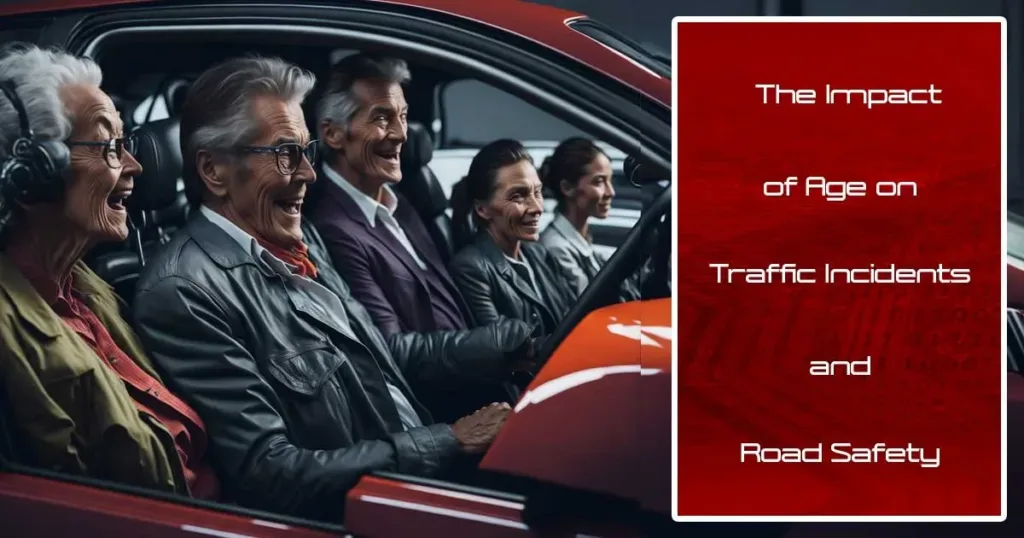Traffic safety across ages remains a paramount concern as diverse age groups exhibit unique driving behaviors, influencing their risk on the roads. This article shines a light on the age-specific challenges and innovative solutions aimed at fostering a safer driving environment for all.
Understanding the Age Impact on Driving
The role of age in traffic incidents is complex, with each age group facing distinct challenges. Young drivers, often limited by their inexperience, encounter higher accident risks due to their developing judgment and reaction skills. On the other hand, older drivers grapple with the natural decline in cognitive and physical abilities, affecting their driving performance.
Young Drivers: Navigating the Learning Curve
For young drivers, the road to mastery is fraught with potential hazards. Their inexperience can lead to critical mistakes, from misunderstanding road signs to poor decision-making in emergencies. Engaging in risky behaviors, such as speeding and not wearing seat belts, further escalates their vulnerability to accidents.
Traffic Safety Across Ages: Adapting to Change
The aging process brings about changes that can impact driving abilities, from slower reaction times to challenges in complex traffic scenarios. Medications for age-related health issues may also affect driving competence, making older adults susceptible to traffic incidents.
Bridging the Gap: Solutions for All Ages
Advancements in traffic management and educational initiatives offer promising solutions:
- Advanced Traffic Management Systems: Leveraging technology to improve traffic flow and safety can particularly benefit older drivers, allowing safer navigation through busy intersections and reducing accident risks.
- Educational Programs: Tailored training for both young and older drivers can enhance awareness of their specific risks and promote safer driving habits.
Local Initiatives: Pioneering a Safer Future
Cities worldwide are pioneering safety measures tailored to drivers of all ages:
- Vision Zero Projects: Aimed at eliminating all traffic fatalities, these initiatives focus on redesigning streets for enhanced safety, benefiting drivers, cyclists, and pedestrians alike.
- Senior-Focused Safety Zones: Implementing reduced speed limits and improved signage in areas with high senior populations to protect vulnerable drivers and pedestrians.
Your Role in Enhancing Traffic Safety Across Ages
Traffic safety is a collective responsibility, requiring the efforts of individuals, communities, and policymakers to create a safer environment for drivers of all ages.
Partner with Grab The Axe for a Safer Tomorrow
At Grab The Axe, we’re committed to enhancing traffic safety across ages through comprehensive assessments and expert guidance. By understanding the unique challenges faced by different age groups, we offer tailored solutions to mitigate risks and promote safer roads for everyone.
Take Action Today
Embark on your journey to safer roads by engaging with Grab The Axe. Subscribe to our insights, follow us on social media, and explore our resources dedicated to improving traffic safety for drivers of all ages. Together, we can make a significant impact on road safety, ensuring a secure driving experience for generations to come.
Schedule your security assessment with Grab The Axe now, and join us in our mission to safeguard lives on the road.
References:
World Health Organization. (No Date). Road traffic injuries. Retrieved from https://www.who.int/news-room/fact-sheets/detail/road-traffic-injuries
National Safety Council. (No Date). Motor Vehicle: Age Group Comparisons. Injury Facts. Retrieved from https://injuryfacts.nsc.org/motor-vehicle/overview/age-group-comparisons/
Traffic Safety Across Ages – To Learn More:
GIS Disaster Preparedness: Leveraging GIS for Disaster Preparedness Across Ages
GIS Data Integration for Security: Revolutionizing Protection Strategies
Cybersecurity GIS Mapping: Elevating Public Safety in the Digital Realm






This Post Has 3 Comments
Pingback: Cybersecurity GIS Mapping: Elevating Public Safety in the Digital Realm - Grab The Axe
Pingback: GIS Disaster Preparedness: Leveraging GIS for Disaster Preparedness Across Ages - Grab The Axe
Pingback: GIS Data Integration for Security: Revolutionizing Protection Strategies - Grab The Axe
Comments are closed.